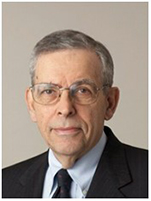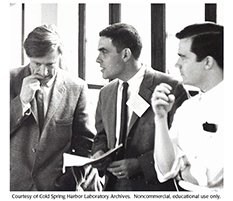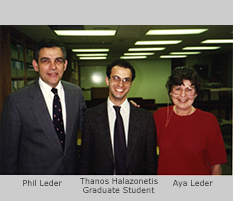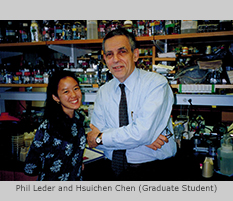Why is our Program named
"The Leder Program..."?
 The Leder Program in Human Biology and Translational Medicine was named after a remarkable man, Dr. Phil Leder. Dr. Leder is a truly exceptional scientist, role model for investigations into translation or basic science, and yes a leader. He was the founder and first Chair of the Harvard Medical School Department of Genetics, where he was an inspiration to students, postdoctoral fellows and faculty. His scientific achievements have been transformational, with each of them breaking new ground. As a postdoctoral fellow working with Marshall Nirenberg at NIH, his experiments led to the cracking of the genetic code, for which Marshall Nirenberg was awarded the Nobel Prize. He identified the first mammalian gene to undergo splicing and had fundamental insights into the structure of immunoglobulin genes. He then turned his attention to cancer and recognized the need for in vivo models for cancer. To this end, he used genetic engineering to make the first mouse model of human cancer, dubbed the oncomouse. This approach to cancer is still very much at the forefront of cancer research. Phil continued to make progress in studies of cancer until his retirement a few years ago. He made many seminal discoveries while leading the Department of Genetics to its current status as one of the best in the world. He was able to build the department not only by choosing good scientists and then nurturing each one to achieve their potential, but also because he has excellent judgement of personality and character, and knows how to build community.
The Leder Program in Human Biology and Translational Medicine was named after a remarkable man, Dr. Phil Leder. Dr. Leder is a truly exceptional scientist, role model for investigations into translation or basic science, and yes a leader. He was the founder and first Chair of the Harvard Medical School Department of Genetics, where he was an inspiration to students, postdoctoral fellows and faculty. His scientific achievements have been transformational, with each of them breaking new ground. As a postdoctoral fellow working with Marshall Nirenberg at NIH, his experiments led to the cracking of the genetic code, for which Marshall Nirenberg was awarded the Nobel Prize. He identified the first mammalian gene to undergo splicing and had fundamental insights into the structure of immunoglobulin genes. He then turned his attention to cancer and recognized the need for in vivo models for cancer. To this end, he used genetic engineering to make the first mouse model of human cancer, dubbed the oncomouse. This approach to cancer is still very much at the forefront of cancer research. Phil continued to make progress in studies of cancer until his retirement a few years ago. He made many seminal discoveries while leading the Department of Genetics to its current status as one of the best in the world. He was able to build the department not only by choosing good scientists and then nurturing each one to achieve their potential, but also because he has excellent judgement of personality and character, and knows how to build community.
 Although Phil is most well-known for his scientific achievements and leadership of the Genetics Department, those who know him personally recognize him as an outstanding human being, with integrity, warmth, kindness, and an uncanny ability to communicate with each person in a way that seems unique and personal. Phil credits his parents for anything that he may have accomplished. He grew up in Virginia, where he was the only son of Polish immigrants, and then attended Harvard College. He received an MD from Harvard Medical School, whereupon he found himself more interested in research than in clinical care. His research career began after an internship in Minnesota.
Although Phil is most well-known for his scientific achievements and leadership of the Genetics Department, those who know him personally recognize him as an outstanding human being, with integrity, warmth, kindness, and an uncanny ability to communicate with each person in a way that seems unique and personal. Phil credits his parents for anything that he may have accomplished. He grew up in Virginia, where he was the only son of Polish immigrants, and then attended Harvard College. He received an MD from Harvard Medical School, whereupon he found himself more interested in research than in clinical care. His research career began after an internship in Minnesota.
Phil was an incredibly effective mentor for graduate students and postdoctoral fellows. Coming from the NIH, he did not have many opportunities to mentor PhD students. Once he established his lab at HMS, he was a magnet for students, and mentored 17 students through their PhD. In 2015, he was awarded the Division of Medical Sciences Outstanding Faculty Award which is given each year to someone who is outstanding in research, mentorship and service to the community. This award was richly deserved and brought forward many letters, images (a few below), and comments from his very grateful trainees. Our name, often shortened to the "Leder Program" is one to be proud of and should inspire each of us to be more like Phil.



Copyright © 2012 by The President and Fellows of Harvard College
